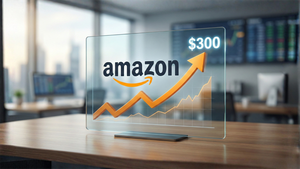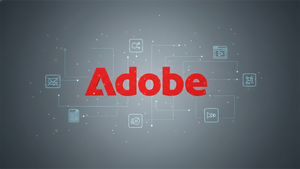
Cincinnati, OH – In a financial landscape often characterized by volatility, consumer goods behemoth Procter & Gamble (NYSE: PG) once again demonstrated its enduring strength, reporting a robust earnings per share (EPS) beat for its fourth quarter of fiscal year 2025. This stellar bottom-line performance arrived amidst a more nuanced sales picture, with growth driven primarily by pricing and product mix rather than volume. Crucially, the company also marked a remarkable milestone: its 69th consecutive year of increasing dividends, reaffirming its status as a paragon of defensive investment in uncertain times.
The report, released on July 29, 2025, painted a picture of a company navigating complex consumer dynamics with strategic precision. While investors cheered the consistent shareholder returns and management’s optimistic outlook for fiscal 2026, the underlying sales performance invites a closer look at the strategies P&G is employing to maintain its dominance in a fiercely competitive and inflation-pressured global market.
P&G's Steady Hand Amidst Economic Crosscurrents
Procter & Gamble's fourth fiscal quarter of 2025 saw the company report net sales of $20.9 billion, a modest 2% increase over the prior year. Organic sales, a key indicator excluding currency fluctuations and acquisitions/divestitures, also grew by 2%. This growth, however, was primarily attributable to a 1% contribution each from higher pricing and a favorable product mix, with sales volume remaining flat. The flat volume suggests that while consumers are accepting higher prices for P&G's premium brands, overall consumption levels are not expanding. E-commerce continued to be a bright spot, surging 12% and now constituting 19% of total sales, showcasing the company's successful digital pivot.
The true highlight for investors was the company's diluted earnings per share (EPS), which soared 17% to $1.48, largely due to lower restructuring charges compared to the previous year. Core EPS also rose 6% to $1.48, comfortably surpassing analyst expectations of $1.42-$1.43. This consistent outperformance on the profit front underscores P&G's operational efficiency and ability to manage costs effectively even as raw material and labor expenses persist.
Perhaps the most significant announcement, particularly for long-term investors, was the declaration of a 5% increase in its quarterly dividend, raising it to $1.0568 per share. This marks the 69th consecutive year of dividend increases, solidifying P&G's elite status as a "Dividend King" – a company that has raised its dividend for 50 or more consecutive years. P&G has now paid dividends for an unbroken 135 years. This commitment to returning value to shareholders, totaling over $16 billion in fiscal 2025 through dividends and share repurchases, offers a crucial anchor for portfolios seeking stability.
Chairman, President, and CEO Jon Moeller acknowledged the challenging environment, stating, "We grew sales and profit in fiscal 2025 and returned high levels of cash to shareowners in a dynamic, difficult and volatile environment." He also unveiled a significant restructuring plan aimed at achieving $1.5 billion in savings, signaling a proactive approach to operational optimization. Initial market reactions were mixed but generally positive, with shares seeing a modest pre-market bump before settling to a relatively flat trajectory. Some analysts noted concerns about annual forecasts and potential consumer pushback on future price hikes meant to offset tariffs, but the overwhelming sentiment leaned towards confidence in P&G's long-term stability.
Who Wins and Who Loses in P&G's Latest Chapter
In the wake of Procter & Gamble's (NYSE: PG) recent earnings announcement, the immediate winners are unequivocally its shareholders, particularly those who prioritize consistent income and stability. The declaration of the 69th consecutive dividend increase cements P&G's reputation as a reliable income generator and a defensive play in a turbulent market. For long-term investors and retirees, the incremental dividend hike, coupled with the EPS beat, reinforces the company's commitment to shareholder value and its fundamental strength. This predictability is a powerful draw in an economic climate where many other sectors face higher levels of uncertainty. The company's ability to consistently generate strong free cash flow and return it to shareholders makes it a cornerstone investment for many.
On the other hand, while not outright "losers," some growth-oriented investors might find P&G's latest sales figures less exhilarating. The flat volume growth, despite overall organic sales increases driven by pricing, suggests that the company is not expanding its market share through increased unit sales as vigorously as some might hope. This could lead to a perception of limited top-line growth potential, which might temper enthusiasm for those seeking aggressive capital appreciation. Additionally, competitors in the consumer staples sector such as Unilever (NYSE: UL), Kimberly-Clark (NYSE: KMB), and Colgate-Palmolive (NYSE: CL) face continued pressure. P&G's strategic focus on premiumization, brand superiority, and operational efficiency sets a high bar, forcing rivals to innovate and adapt quickly to avoid losing ground in key categories.
The company's significant $1.5 billion restructuring plan, while ultimately beneficial for long-term profitability, could present short-term challenges for certain employees or operational units within P&G as the company streamlines its operations. While the aim is efficiency, such large-scale reorganizations often involve workforce adjustments or shifts in operational focus. However, ultimately, the strengthened financial position resulting from these savings is designed to benefit the company as a whole. Lastly, consumers could be seen as facing a subtle pressure, as P&G’s continued reliance on price increases to drive sales growth means they are consistently paying more for essential household goods, albeit often for superior quality products.
The Broader Ripple Effect: Industry Trends and Strategic Responses
Procter & Gamble's latest performance offers a microcosm of the broader trends shaping the consumer packaged goods (CPG) industry. The continued reliance on pricing and favorable product mix for sales growth, rather than pure volume expansion, reflects the ongoing inflationary environment and evolving consumer behavior. Across the CPG landscape, companies are grappling with elevated input costs for raw materials, energy, and logistics, necessitating strategic price increases to protect margins. This trend is unlikely to abate soon, forcing consumers to make more deliberate purchasing decisions.
P&G's emphasis on "brand superiority" aligns with a wider industry trend of premiumization. In a market saturated with choices, established brands with a reputation for quality and efficacy can command higher prices. This strategy helps P&G differentiate its products from lower-cost private labels and smaller, niche brands that often compete on price. However, it also means that competitors must either follow suit with their own premium offerings or aggressively compete in the value segment. Companies like Unilever (NYSE: UL), with its diverse portfolio, are also focusing on optimizing their brand mix and innovating to justify premium pricing.
The substantial investment in e-commerce, now accounting for 19% of P&G's sales, highlights another critical industry shift. The pandemic accelerated digital adoption, making robust online channels indispensable for CPG companies. This trend will only intensify, requiring continuous investment in digital marketing, direct-to-consumer capabilities, and supply chain optimization for online fulfillment. P&G's performance here indicates a successful adaptation to this new retail reality, potentially creating a benchmark for rivals.
From a regulatory standpoint, sustained price increases across the CPG sector could draw scrutiny from consumer protection agencies, particularly if they are perceived as disproportionate to cost increases. While P&G's increases are generally tied to genuine cost pressures, the cumulative effect on household budgets is a sensitive topic. Historically, CPG giants have navigated similar economic cycles, often emerging stronger due to their diversified portfolios and brand loyalty. P&G's planned $1.5 billion restructuring is a proactive measure mirroring actions taken by other large corporations to streamline operations and enhance efficiency in an environment demanding leaner, more agile business models.
Charting the Course: What Comes Next for P&G
Looking ahead, Procter & Gamble's (NYSE: PG) fiscal 2026 outlook and strategic initiatives will be under intense scrutiny. The company has projected another year of organic sales growth, core EPS growth, and strong adjusted free cash flow productivity. The key challenge will be to achieve these targets in a consumer environment that remains unpredictable, marked by persistent inflation, varying levels of consumer confidence, and a potential for trade-downs to private label brands if economic pressures intensify. P&G's ability to drive organic sales growth will depend heavily on its continued strategy of brand superiority, product innovation, and effective marketing to justify its premium pricing.
In the short term, investors will be closely watching P&G's execution of its $1.5 billion restructuring plan. Successful implementation of these savings initiatives could provide a significant boost to profitability and operational efficiency, further bolstering the company's financial resilience. Any signs of operational hiccups or delays in realizing these savings could temper investor sentiment. Additionally, the company's ability to manage commodity costs and potential new tariffs will be crucial; while P&G has historically demonstrated pricing power, there's a limit to how much consumers will absorb before shifting their purchasing habits.
Long-term possibilities for P&G include continued expansion in emerging markets, where rising disposable incomes can fuel demand for its vast portfolio of household and personal care products. Strategic acquisitions that complement its existing brands or open new growth avenues could also be on the horizon. The company may also deepen its focus on sustainability and ethically sourced products, aligning with evolving consumer values and potentially opening new market opportunities. Market challenges include intense competition, the rise of direct-to-consumer (DTC) brands, and the need to continuously innovate to stay relevant in a fast-paced retail landscape. P&G will likely continue to invest heavily in R&D and digital capabilities to maintain its competitive edge.
A Legacy of Resilience and a Glimpse Forward
Procter & Gamble's Q4 fiscal 2025 earnings report stands as a testament to the consumer goods giant's remarkable resilience and strategic acumen. The consistent EPS beat, coupled with the historic 69th consecutive dividend increase, underscores P&G's unwavering commitment to shareholder returns and its robust operational efficiency. While the mixed sales performance, with flat volume growth offset by pricing and mix, highlights the ongoing complexities of the consumer environment, it also showcases the company's ability to adapt and maintain profitability.
Moving forward, P&G remains a formidable force in the market, anchored by its portfolio of leading brands and a clear strategy focused on superiority, productivity, and agile execution. Investors should continue to monitor the interplay between pricing power and consumer volume, watching for any shifts in purchasing behavior that might indicate heightened price sensitivity. The successful implementation of the $1.5 billion restructuring plan will be a key indicator of future profitability enhancements.
Ultimately, P&G’s latest performance reinforces its status as a foundational investment for those seeking stability and consistent income. Its ability to navigate inflationary pressures and evolving consumer preferences while consistently rewarding shareholders speaks volumes about its enduring business model. The coming months will offer further insights into how effectively P&G can translate its strategic objectives into sustained organic volume growth, ensuring its legacy of market leadership continues for decades to come.

















